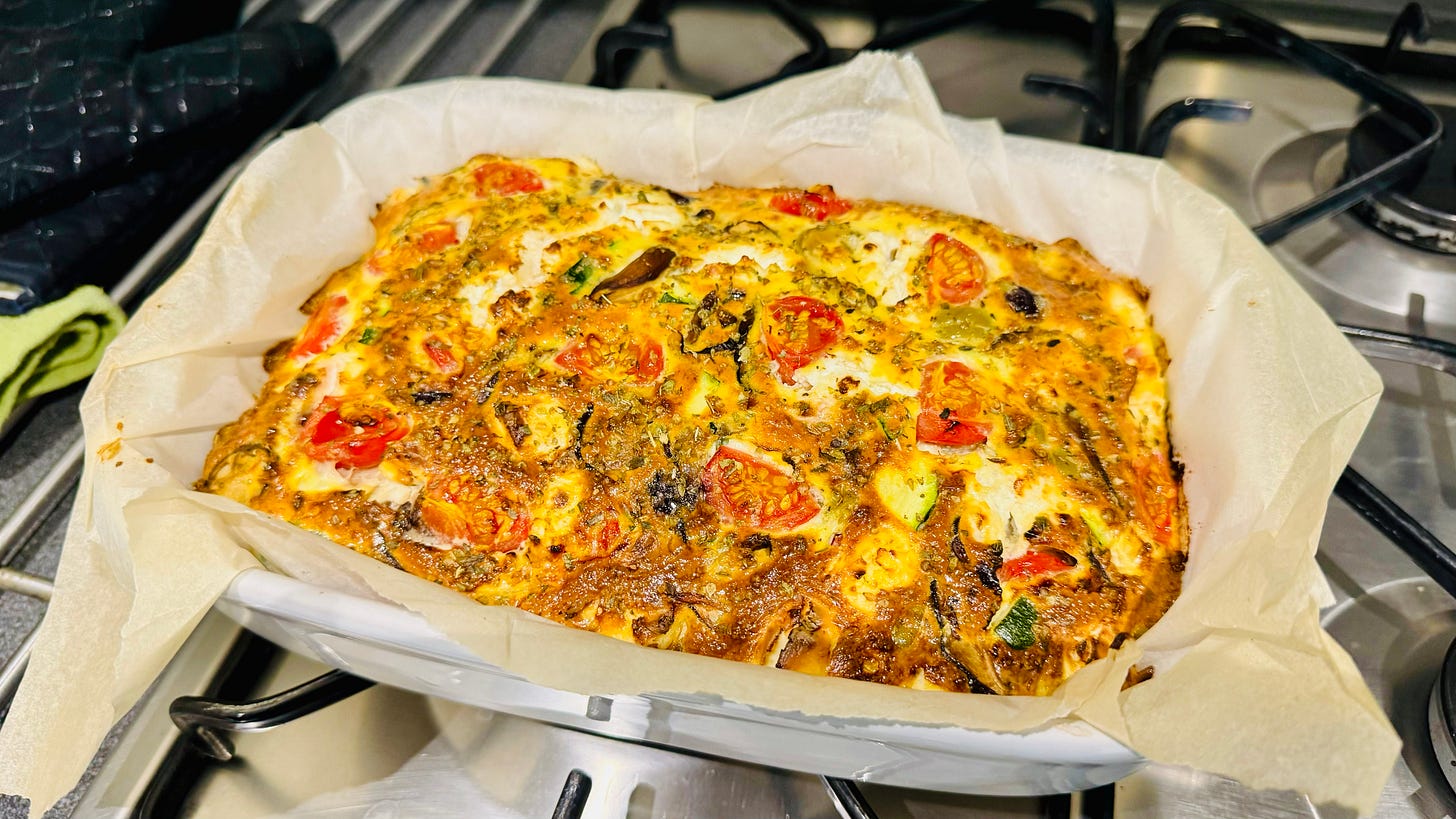Breaking the fast series
An intro to morning meals with a side of science and a sprinkle of sass
During a recent conversation with a friend, I nervously confessed that I had passionately disliked the idea of breakfast for years. I was curious to see her reaction, as for the longest time, she thought I had it all together, like the perfect poached egg, when it came to that specific meal of the day.
Suffice to say that her wide-eyed countenance said it all, as did her ”You? No way!” expression.
I have wondered if other people felt the same way and if, like me, they had morning stand-offs with well-meaning adults during childhood, where they were told that “breakfast is the most important meal of the day” while rolling their eyes and crossing their arms in defiance.
To breakfast or not to breakfast? That is the question.
I was never the type of person who “rises and eats" (mind you, I’m still not). As a kid, my stomach was in open rebellion in the mornings like Peter from The Great, treating breakfast at 7:30 as one of Catherine's progressive reforms—unwelcome, misunderstood, and destined to create chaos.
While adults fretted about the most important meal of the day, my digestive system’s motto was “food before 9:30 a.m. is tyranny.” Much to their dismay, my appetite would never arrive until that hour, and some days, even that was debatable.
By my second year in university, I would sit through 9 a.m. lectures clutching only my water bottle while my classmates devoured sandwiches and sipped coffees—their breakfast enthusiasm as baffling to me as that of people who choose to wake up at 4:30 a.m. My stomach would audibly growl in protest—not from hunger, but in solidarity with my anti-breakfast sentiment.
Does your stomach also rebel at dawn? If yes, how did you overcome this challenge? Let me know in the comments.
The day breakfast turned on me.
This act of rebellion continued into my early twenties when I got my first office job. Mornings became a blur of 6 a.m. wake-ups, fast showers, and sprinting to catch a metro that would take me across the city to the office.
But then I started resistance training, a pursuit that turned my body into a metabolic drama queen, sending frantic SOS signals that could no longer be ignored. Suddenly, skipping breakfast wasn't an option anymore - it was sabotaging my recovery, hormonal balance, mood, and ability to focus past 2 p.m. My body started staging a coup against my lifelong breakfast boycott, as I found myself in unfamiliar territory: hungry in the mornings (especially after workouts).
It wasn't until some tidbits of science arrived on my plate, though, that I understood why my body was staging this coup. As it turned out, cortisol—nature's espresso shot—naturally begins to rise before awakening and is modulated by the circadian rhythm, which prepares the body for the day ahead. Then, it peaks shortly after waking up.
This is when I realized why eating a protein-rich breakfast within 30 minutes to 1.5 hours of waking is essential. It helps control the body's cortisol rhythm (which should steadily decline throughout the day), regulate blood sugar, and balance hormones.
My body wasn't being dramatic; it was being scientifically accurate.
Something had to change, fast.
And change it did
The realization of change marked the start of a messy, trial-and-error process long before I learned how a protein-rich breakfast impacts cortisol.
So I went from the "fruit juice or smoothie as breakfast" debacle (which didn't last long; my blood sugar didn't approve ) to overnight oats, which proved to be a stomachache in a jar. It turns out cold foods on an empty stomach are a bummer for the body unless it's summer and 40 degrees.
Next came the yogurt, croissant, banana, and one boiled egg combo, and it was then that I realized the egg made a difference.
But when I settled on the holy trinity of protein (eggs, sardines, and cottage cheese), good fats (avocado and olive oil), and fiber (vegetables and seeds), something clicked. The conversation between my brain and gut changed from "Here we go again" to "We're onto something, girl. Keep going."
I also had an aha moment about savory foods and leftovers, so I started thinking how I could reuse them for breakfast—breakfast tacos, anyone?
Which takes us to this series
My rollercoaster breakfast journey—from defiance to acceptance to actual enthusiasm—is one of the reasons I decided to create this series. When I started thinking about it, I wanted it to go beyond the one-size-fits-all nutrition dogma and tell honest, humorous stories about the things that I, and people close to me, have grappled with for over a decade, like food's impact on sleep, the importance of both protein and fiber and their role in satiety, the gut microbiome, whether breakfast is important, or even personal anecdotes.
Alongside stories about spectacular failures and discoveries, I will share some of the frameworks and practices I learned and my favorite recipes, all of which have transformed my breakfast since I implemented them. I will also share "just assemble me like a Lego" meal ideas because, let's be honest, we all have more rushed mornings than we'd like to admit and endless to-do lists to get to the bottom of.
What challenges are you facing with breakfast and nutrition in general? What things would you like to learn more about? Let me know in the comments.
Now, onto the recipe.
Hearty Spring Frittata
This is one of those recipes that is so versatile that it can be served for breakfast, lunch, or dinner. It’s also packed with protein, fiber, and good fats, so it will keep you full for longer.
Serves:3
Prep time: 15 mins
Cooking time: 30 mins
Ingredients
6 eggs
150 g cottage cheese
10-12 big olives, cut in small circles
1 small zucchini
1 garlic clove (optional)
10 cherry tomatoes, halved or quartered
30g feta cheese
1/2 teaspoon of Italian or Provence herbs or simply oregano
Pinch of salt, freshly ground pepper
Method
Set your oven to 180°C (350°F) or 160°C (with the fan function)
Beat the eggs with salt, pepper, and herbs, then mix in the cottage cheese. Let the mixture rest for a few minutes.
Meanwhile, slice the shiitake mushrooms into strips and sauté them in a pan on medium-high heat. Do not crowd the pan; we want the mushrooms to become crispy, not watery, as they will give a nice texture to the frittata. Set aside.
Using a mandolin, slice the zucchini into thin, small circles, then repeat the sautéing step.
Add the sauteed vegetables to the egg mix and transfer to a baking dish. Then add the cherry tomatoes, olives, and feta cheese.
Pop the baking dish in the oven for 25-30 minutes or until the eggs are set.
When it is done, let it cool for a few minutes, then serve.
Enjoy it with a fresh side salad. I like a simple one with rocket and cherry tomatoes.
P.S. I hope you enjoy this as much as I did. x





